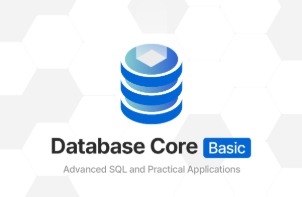
김영한의 실전 데이터베이스 - 기본편
김영한
실무에 꼭 필요한 SQL과 데이터베이스의 기본기를 학습합니다. 개발자뿐만 아니라 기획자나 데이터 분석가분들도 SQL을 깊이있게 학습합니다.
초급
SQL, MySQL, DBMS/RDBMS
You can utilize and complete the DB data access technology required for backend development. You can understand the principles and structure of Spring DB access technology and grow into a more in-depth backend developer.
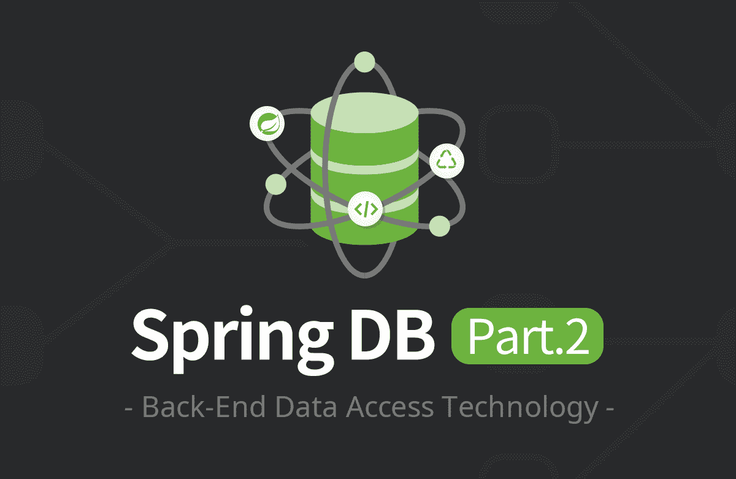
Internal principles of using DB through Spring
Various ways to use DB through Spring
Spring DB Access Technology
Must-know for backend developers
Spring Data Access Technology Part 2
📣 Please check!
This lecture is the seventh in the "Complete Java Spring Mastery" series . First, check out the Spring Mastery Roadmap from Woowa Brothers' youngest technical director, Kim Young-han.
• Roadmap link: https://www.inflearn.com/roadmaps/373 (click to go directly)
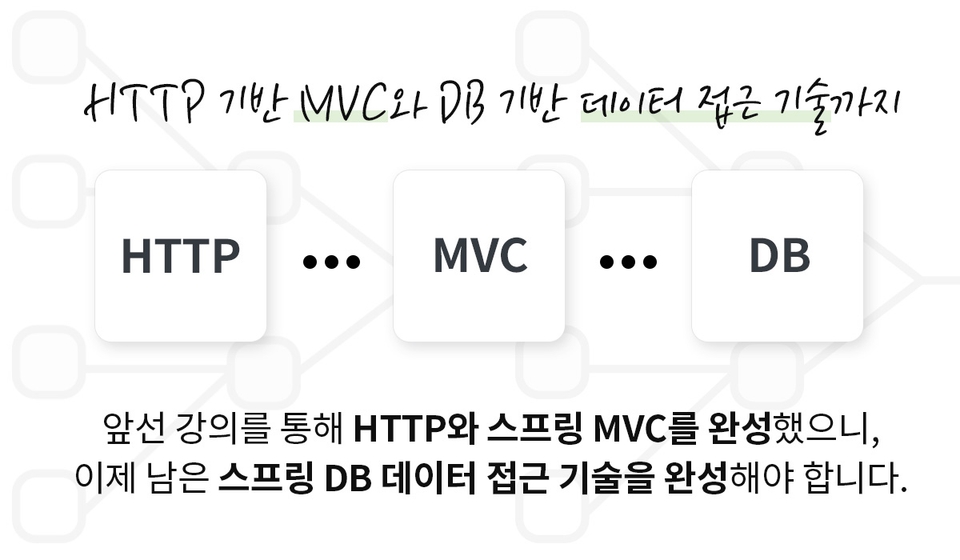
To properly develop a backend web application, you need to master two major pillars: HTTP-based MVC and database-based data access technology. Having mastered HTTP and Spring MVC in the previous lecture, we now need to master the remaining pillar: Spring DB data access technology.
Please check if you understood the principles and structure of Spring DB through the previous lecture, <Spring DB Part 1> .
1. Understand the basic principles of Spring Data access technology.
2. Developed directly with code used in practice
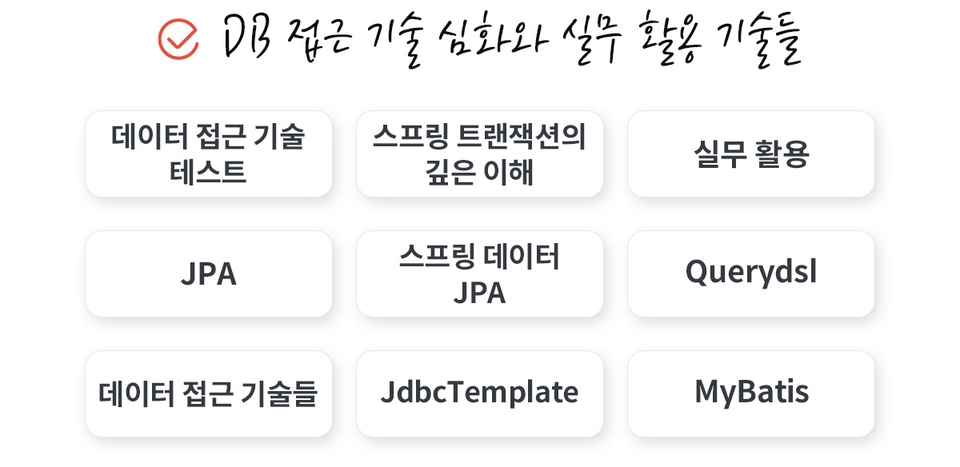
Through Part 1 of the Spring DB course, we've learned the core principles and structure of database access technology. In Part 2 of the Spring DB course, we'll build on the foundations of Part 1 and learn various practical applications. Part 2 is broadly divided into three parts.
You'll learn a variety of data access technologies commonly used in practice, such as JdbcTemplate, MyBatis, JPA, Spring Data JPA, and Querydsl, gradually developing them through real-world examples. This process will help you understand the necessity of each technology and its strengths and weaknesses as you develop code.
Data access technologies are ultimately used to manage data in a database. Therefore, it's crucial to ensure that the technology can properly store and retrieve data in the actual database. This lecture will step-by-step explain how to conduct testing in situations where databases are linked.
In Part 1 of Spring DB, we explored the internal principles of Spring's transaction functionality, why it's necessary, and how it works. In this lesson, we'll delve deeper into Spring transactions and explore practical applications.
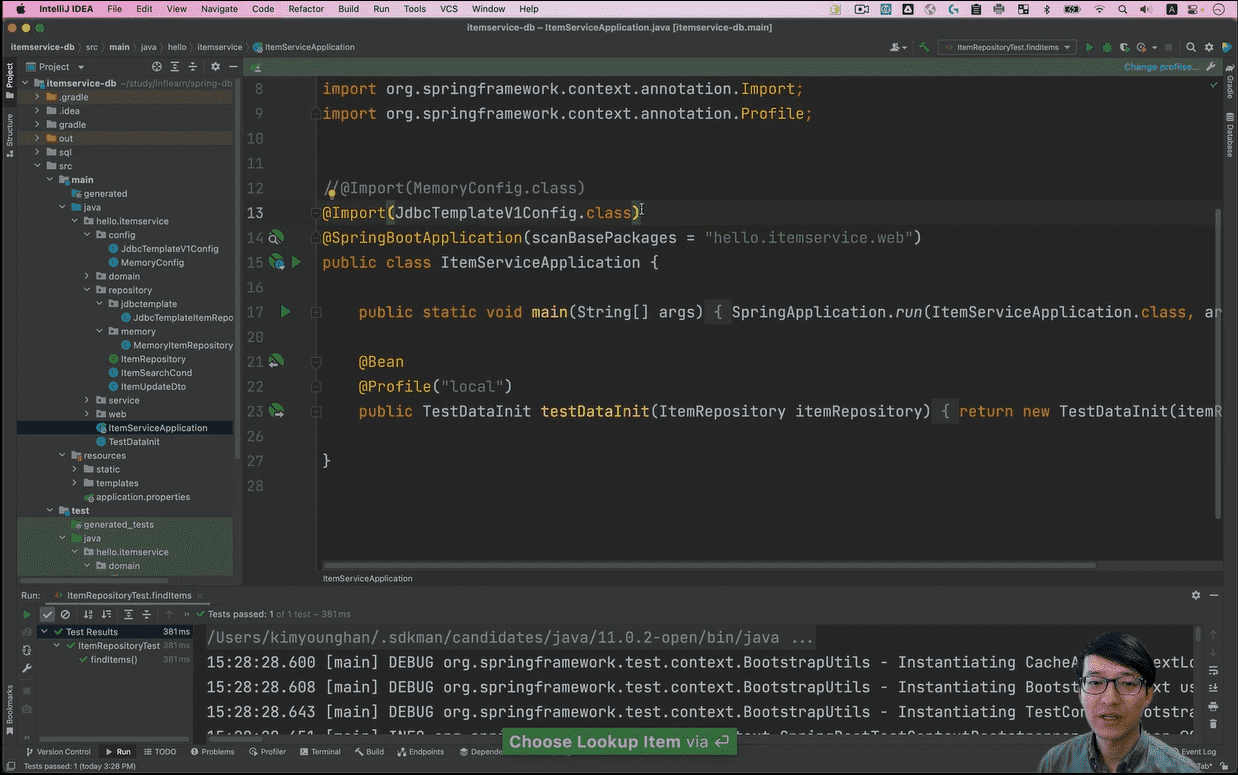
When working directly with SQL, Spring's JdbcTemplate is a great choice. This technology makes using JDBC very convenient and handles most of the repetitive tasks associated with direct JDBC use.
* Developers only need to write SQL, define parameters to pass, and map response values.
* Understand the pros and cons of JdbcTemplate by applying it to a real-world web application.
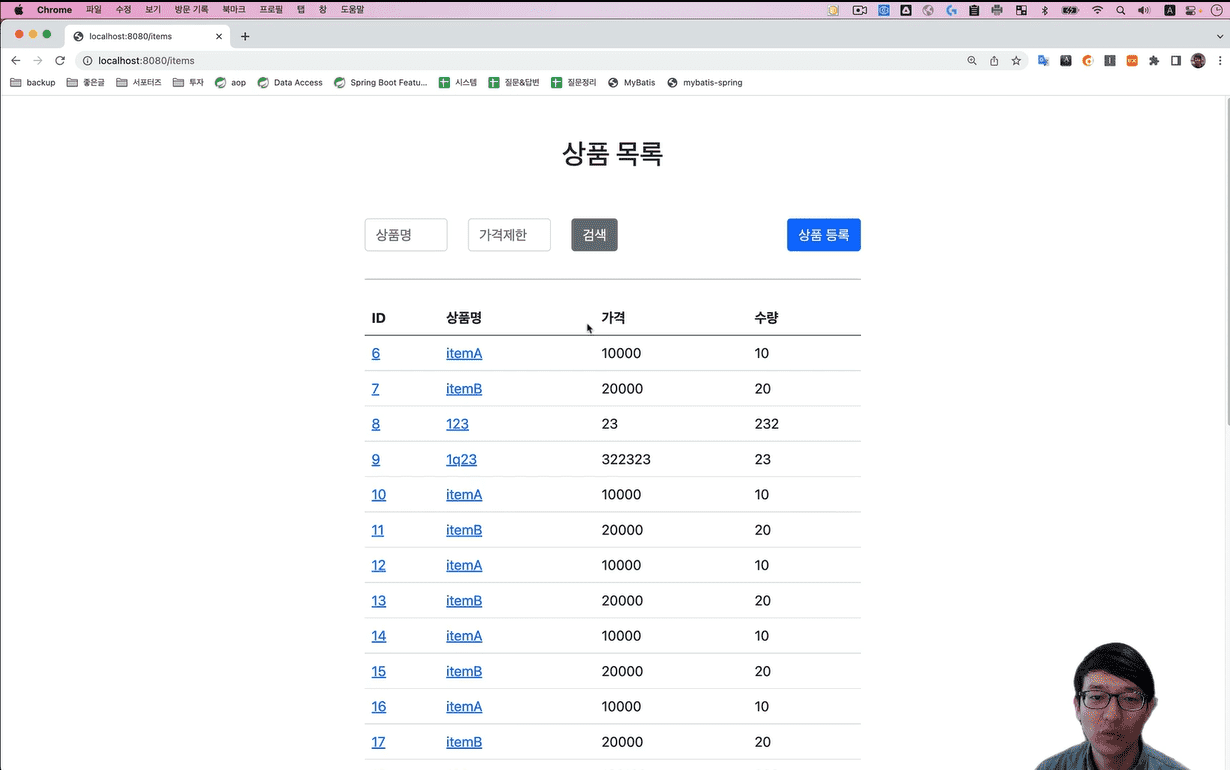
MyBatis offers more features than the JdbcTemplate described above. Compared to JdbcTemplate, MyBatis's most attractive feature is its ability to conveniently write SQL in XML and to create dynamic queries. In this lecture, you'll learn about the advantages and disadvantages of this technology by directly applying MyBatis code to a live web application.
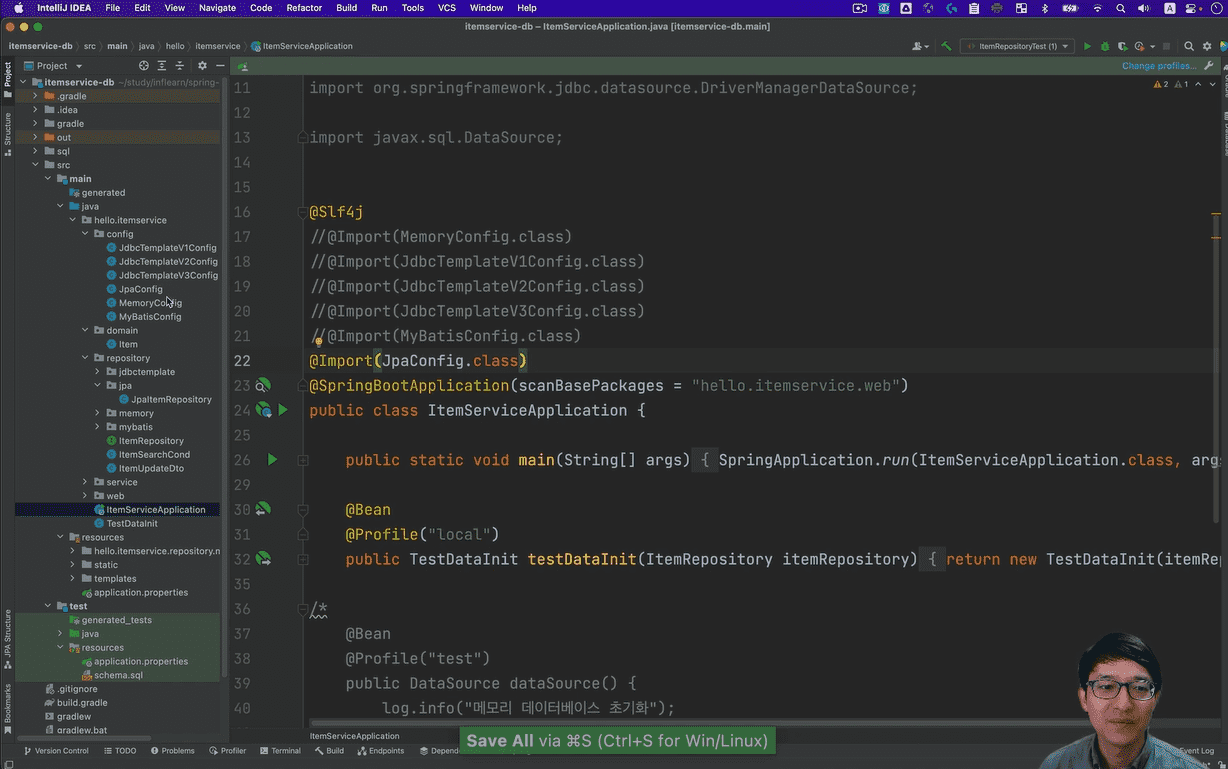
Spring and JPA are leading technologies in the Java enterprise market. While Spring provides a variety of application-wide features, including a DI container, JPA provides ORM data access technology. While JPA is as extensive as Spring and presents a significant learning curve, once mastered, it can significantly improve productivity in data access. This article explores the basic features of these technologies, their respective pros and cons, and the overall picture, highlighting why they should be used.
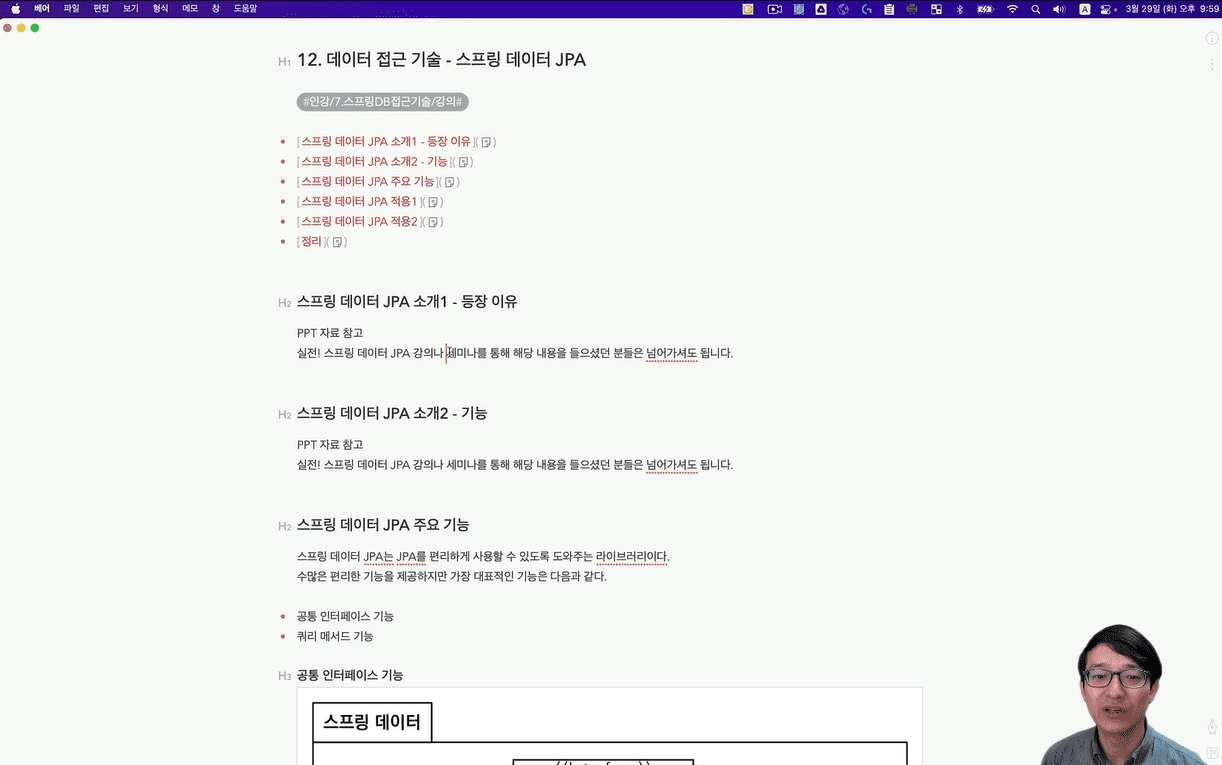
Spring Data JPA is a technology that makes JPA more convenient to use. Simply put, it provides all the basic CRUD functionality, dramatically reducing the amount of code developers need to write. In this course, you'll learn about the strengths and weaknesses of this technology by directly applying Spring Data JPA to a working web application.
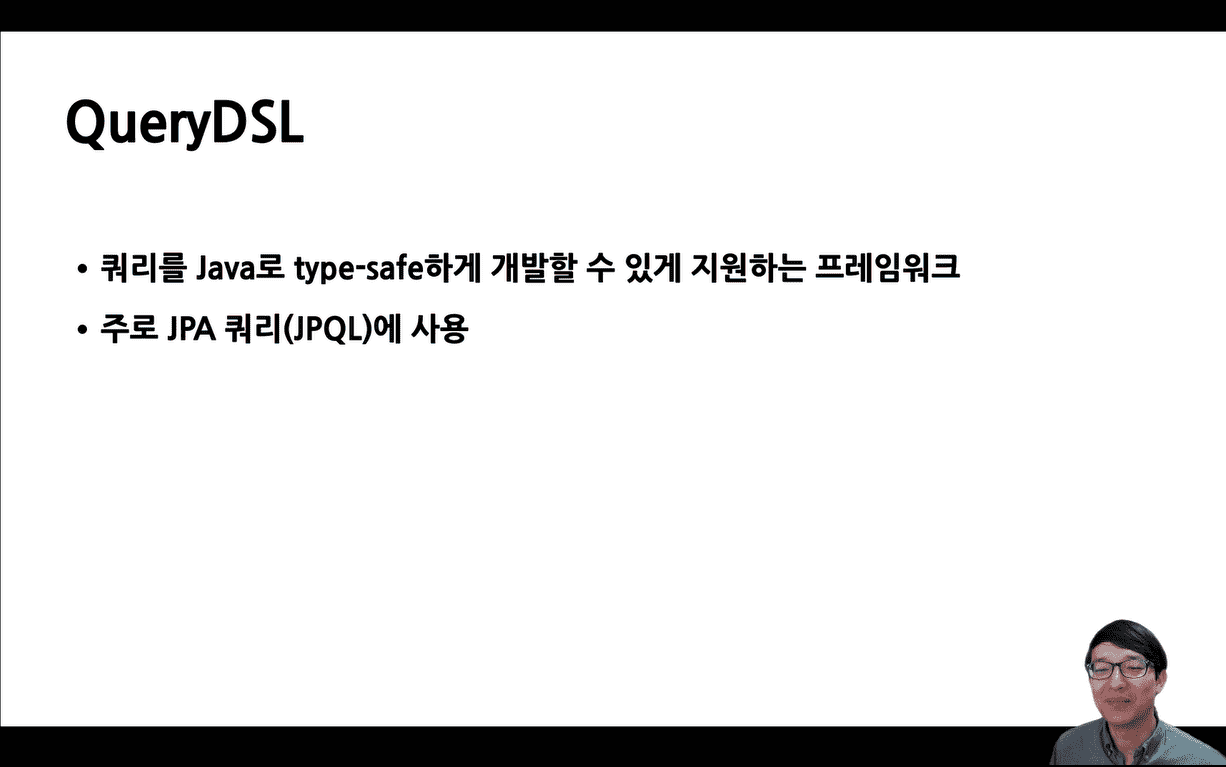
JPA struggles with complex or dynamic queries. Querydsl provides a convenient solution to this problem. It's a must-have technology for anyone using JPA in practice. In this course, you'll learn about the strengths and weaknesses of Querydsl by directly applying it to a working web application.
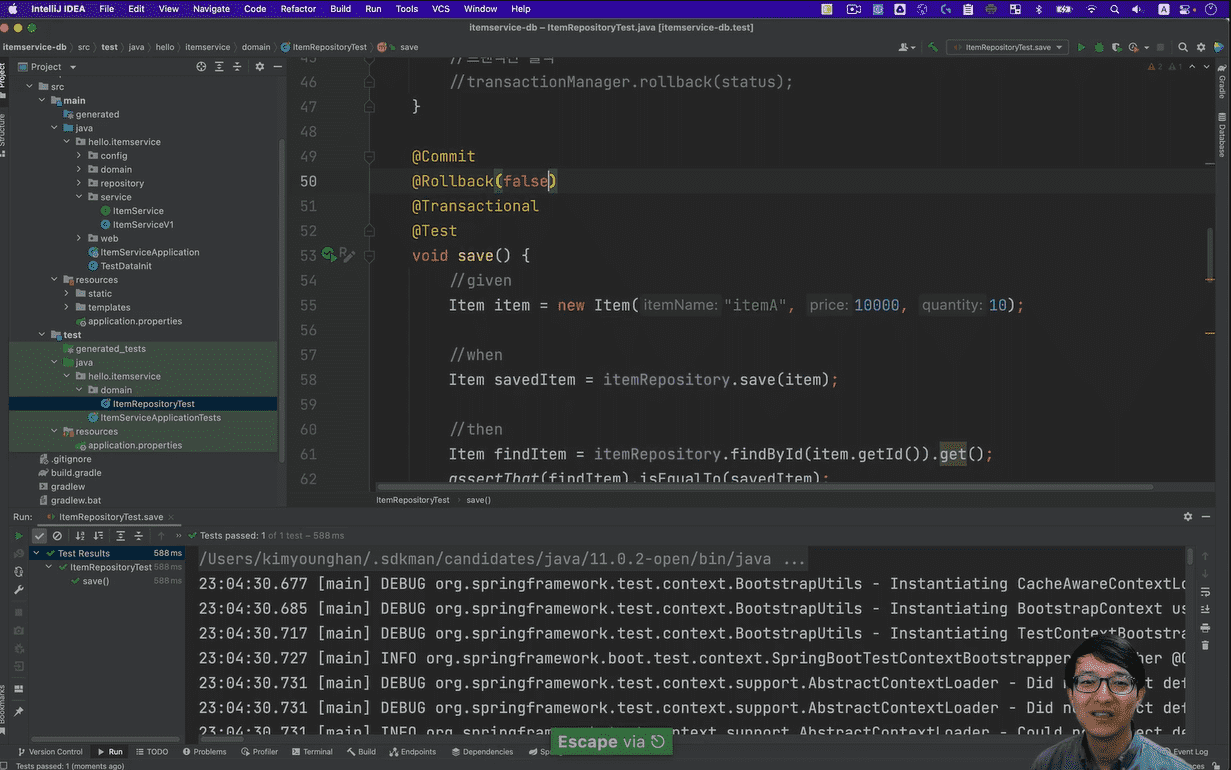
Data access technologies are ultimately used to manage data in a database. Therefore, it's crucial to ensure that the data access technologies can properly store and retrieve data in the actual database. This lecture will step-by-step explain how to conduct testing in situations where databases are connected. For example, we'll explain how to structure tests that connect to a database, and we'll explore the operation of @Transactional and embedded mode DBs through code.
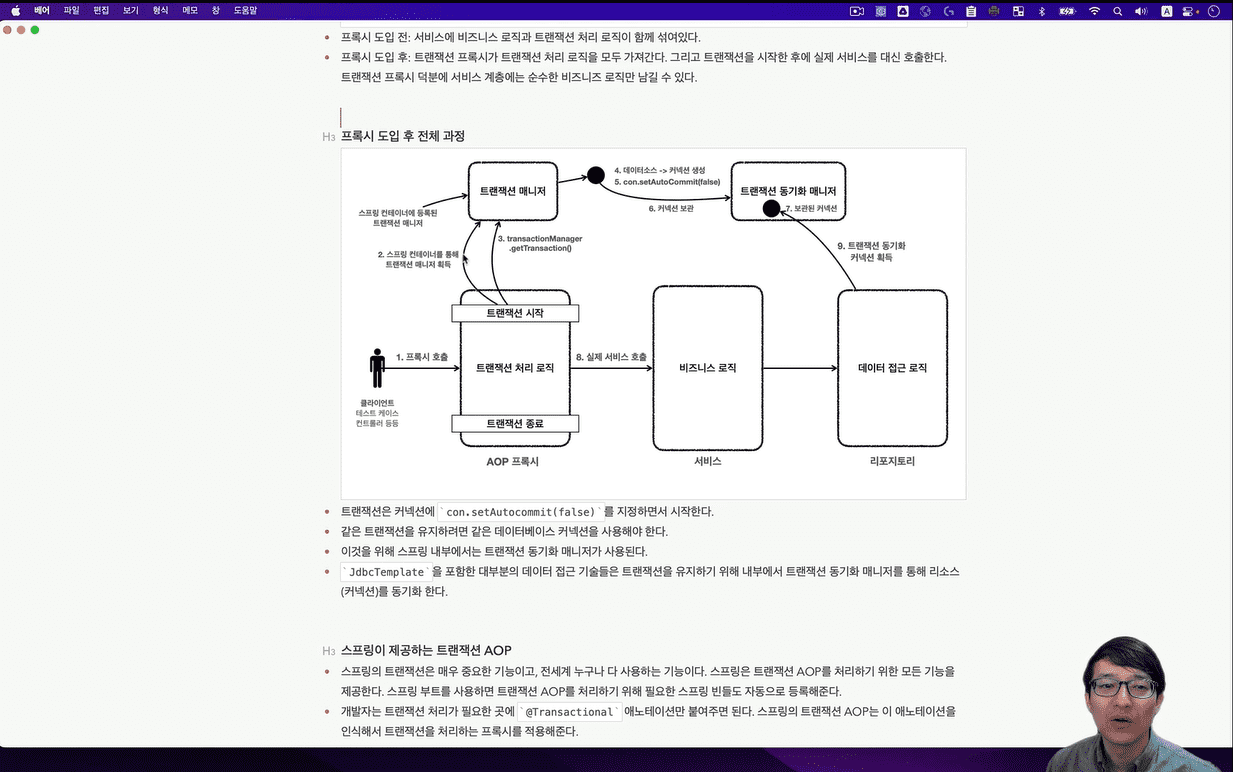
In Part 1 of DB, we explored the necessity of Spring's transaction features and the underlying principles of their operation. This time, we'll delve deeper into the various features offered by Spring transactions, including practical considerations for using Spring Transaction AOP, various Spring transaction options, and the internal principles of how Spring transactions commit and rollback when exceptions occur.
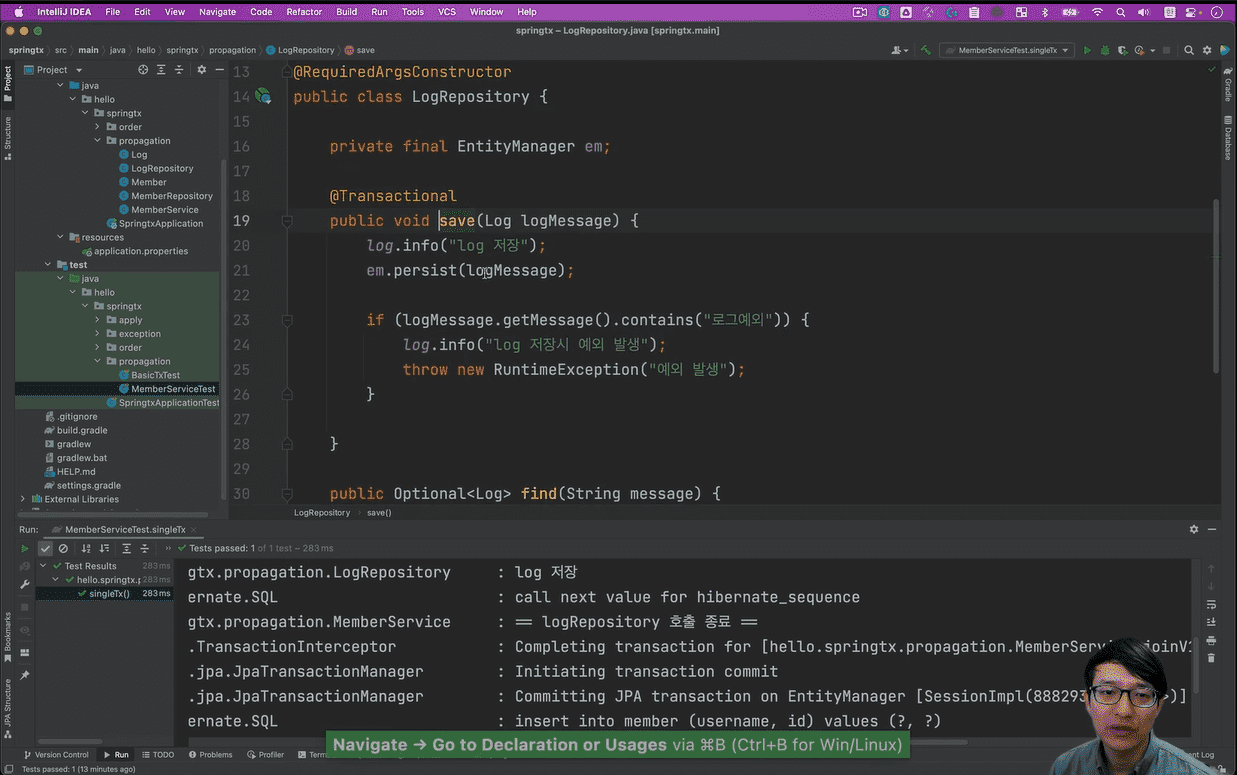
This course covers Spring's transaction propagation in depth. It covers why transaction propagation is necessary, various transaction propagation options, exception handling based on propagation options, and considerations for using transaction propagation options in practice.

Who is this course right for?
Developers who want to access DB and manage data through Spring
Developer job seeker
Working developers who want to deeply understand Spring DB access technology
Developers who want to create web applications with Spring
Need to know before starting?
Java language
Spring Basics
DB Basic Knowledge
568,471
Learners
38,370
Reviews
9,017
Answers
5.0
Rating
25
Courses
교육자
전: 우아한형제들 기술이사, 카카오, SK플래닛
진짜 실무에 필요한 제대로 된 개발자가 될 수 있도록, 교육하는 것이 저의 목표입니다.
EO 인터뷰 영상
개발바닥 - 시골 청년 개발왕 되다
All
88 lectures ∙ (13hr 59min)
Course Materials:
21. organize
03:52
All
623 reviews
5.0
623 reviews
Reviews 2
∙
Average Rating 5.0
5
영한님 안녕하세요 ! 작년 7월부터 공부를 시작해서 1년 4개월이 지나서 드디어 영한님 강의(부트 강의 제외)를 다 들었습니다,, 매 강의를 들으면서 DB 2편까지 듣고 제대로 수강평을 작성해보고자 마음을 먹었는데 드디어 쓸 수 있게 되었어요,, 비전공자로 개발 공부가 막막할 때, 영한님 강의를 들으며 지금까지 성장할 수 있었던 것 같습니다. 강의를 통해서 프로젝트도 여러 개 해보면서, 부족한 cs 공부는 스터디를 통해서 공부해왔습니다. Spring, Jpa 모든 강의를 다 들은 영한님에 대한 강의 특징을 말씀드리겠습니다. 영한님 강의 특징을 말씀드리자면 5단계를 배우기 위해서 1단계부터 차근차근 가르쳐주십니다. 1~3단계를 모르는 체로 5단계를 알고 계신다면, 강의를 통해 1~3단계를 배우면 왜 5단계가 이렇게 나왔는지 알 수 있습니다. 저는 항상 모르고 들었어서 점점 진화하는 코드를 보면서 항상 신기해했습니다,, 기술이 이렇게 발전됐구나 하면서요.(새로운 기술이 있을 수 있는 이유는 과거의 기술들이 있기 때문이니까) 그리고 영한님 강의는 여러 번 봐야 더욱 효과가 좋다고 생각해요. 예를 들어 spring 기본보다가 spring mvc강의를 듣고 다시 spring 기본을 들으면 처음 들었던 거랑 다르게 시야가 더 넓어지실거에요. 그래서 저는 JPA 기본을 2~3번 들었던 것 같아요(어렵기도해서) 영한님 강의를 고민하시는 분들은 이 글을 읽고 한번 생각해보셨으면 좋겠어요. 아 그리고 마지막으로 서포터즈님들 QnA 답변을 잘해주셔서 너무 감사드립니다,,! 저는 항상 모르는게 있으면 구글링이나 QnA에서 해결했던 것 같습니다. 모두 화이팅입니다. 긴 글 읽어주셔서 감사합니다.
gusdn85554님 단계적으로 잘 이해하고 계시군요. 그리고 말씀하신 것 처럼 복습하는 것도 정말 중요합니다. 응원합니다!
Reviews 14
∙
Average Rating 5.0
5
안녕하세요. 교수님. 이번 강의도 완강을 했네요. 1년정도의 시간동안 퇴근 후나 주말에 강의를 들으면서 로드맵을 따라 왔는데 이제 진짜 대단원의 마지막 장만 남았네요. 항상 강의를 들으면서 해당 기술의 탄생 배경과 왜 그 기술을 사용하는지 누구나 이해할 수 있도록 쉽게 설명해주고 하나라도 더 전달 해주시려고 하셔서 너무 감사합니다. 가끔 강의를 보면서 교수님의 컴퓨터 시간을 봅니다. 어쩔때는 숫자로 나오고 어쩔때는 시계모양으로 나와서 일부러 숨기시는건가 하는 생각도 했습니다.ㅋㅋㅋ 아무튼 이른 저녁부터 새벽까지 다양한 시간대에 강의를 찍으시는걸 보면서 교수님도 이렇게 열심히 좋은 강의를 찍어주시는데 나는 저렇게 열심히 하는가? 라는 반성도 많이 하게 되었습니다. 좋은 강의를 제공해주시고 또 선배 개발자로서 아낌없는 조언도 해주셔서 기술적인 학습뿐만 아니라 인생의 동기부여를 얻을 수 있는 1년 여간의 시간이었습니다. 앞으로도 이 시스템을 잘 유지하면서 즐겁게 개발할 수 있을거 같습니다. 감사합니다.
선한영향력 개발자님 항상 열심히 들어주시고 또 수강평도 자주 남겨주셔서 감사합니다. 1년을 함께했다고 하니 저도 뭔가 같이한 느낌이 들어서 더 보람이 있네요. 시간은 가끔 학생분들이 이야기를 주셔서, 강의에 더 집중할 수 있게 최근에는 점점 가리고 있답니다^^
$77.00
Check out other courses by the instructor!
Explore other courses in the same field!